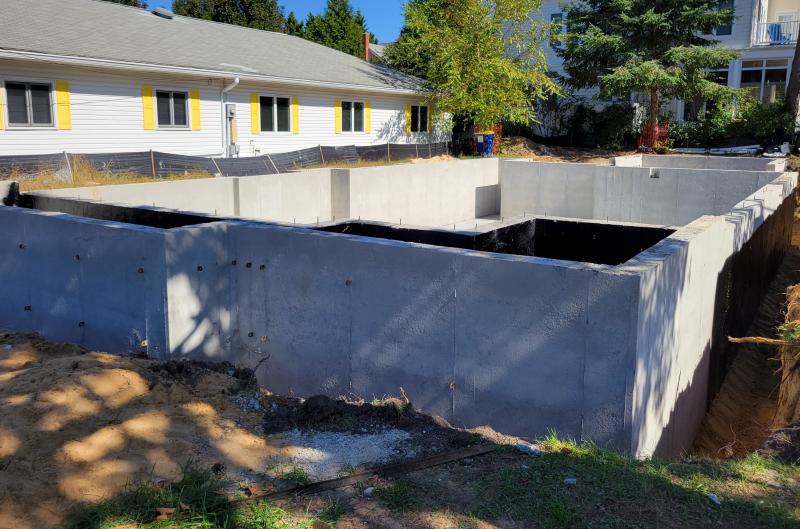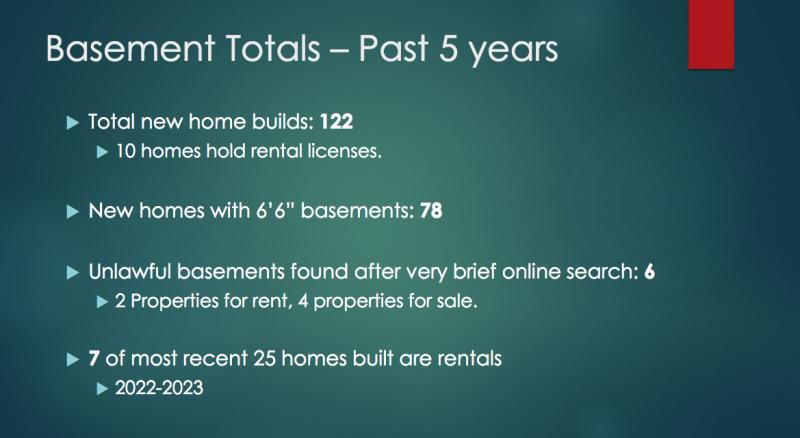Rehoboth officials eyeing unlawful basement conversions
Turning what is supposed to be non-habitable basement space into a living area is a not-so-quiet secret in Rehoboth Beach. The practice has caught the attention of city commissioners, who are now looking to end it.
Rehoboth code addresses the uses of basements a few different ways.
Property owners are allowed to have a basement of 6-foot-6-inches or lower that does not count against a structure’s gross floor area. That area is allowed to be finished, but its intended purpose is to allow for storage, and it’s unlawful to turn it into habitable living space.
Property owners with a basement height of 6-feet-8-inches are allowed to have laundry rooms and bathrooms there.
Property owners with a full basement at a height of at least 7 feet can turn that space into a habitable area, and city code gives a 1,000-square-foot credit that can be applied to the structure's gross floor area. This provision allows for a structure to have more total square feet, but less of it is above ground.
Assistant Building Inspector Corey Shinko has been working on the issue of unlawful basement conversions for months. Earlier this year, he requested the city bring code in line with the International Building Code related to the height of basements. After a number of meetings, the request failed, but in March, commissioners adopted a resolution allowing projects with a basement height of 6-feet-6-inches to move forward while they figured out the solution.
At the time, commissioners asked Shinko to gauge the severity of the situation. He didn’t know then, but he returned to a commissioner workshop Oct. 10 with more information.
Between January 2018 and June 2023, there were 122 new home builds. Seventy-eight of those included a basement height of 6-feet-6-inches. He said a brief search online showed six of the new homes – two rentals, four for sale – were actively advertising unlawfully converted basement space as a living area.
Shinko said each house with the 6-foot-6-inch basement height received a certificate of occupancy stating that the basement can’t be used as habitable space.
Shinko said this was done quickly, using open-source search engines, and does not include older homes that have been renovated.
“The actual number is much greater,” said Shinko.
Mayor Stan Mills said he fully agrees that it’s happening quite a bit. People get all their paperwork and then violate code, he said.
Commissioner Toni Sharp questioned how a property owner could receive a rental license with a basement that had been turned into habitable space. Their rental license should be at risk, she said.
Shinko said the city does one inspection before issuing the license. After that, he said, they don’t go back unless there’s an issue brought to the city’s attention.
It’s difficult, he said, because property owners are allowed to finish the 6-foot-6-inch basement, but not make it habitable. That means a property owner will make the space look like storage, then make it habitable after the inspection is over.
Sharp asked why the city doesn’t do annual inspections.
City Solicitor Glenn Mandalas said the problem is that property owners will go through a lot to make things fit code for a brief period because it’s so valuable.
There are options available, but they’ll take time and money, said Mandalas.
Sharp said the process for getting a rental license may need to be more complicated to deter owners. Most of the power the city has is in the issuance of the business and rental licenses, she said.
Resident Frank Cooper agreed with Sharp. The license is what matters, said Cooper. If someone is blatantly defying code, the city needs to be allowed to enforce the rules, he said.
Resident Frances Kelleher said one of her neighbors has a list of items in violation of code they plan to break once a certificate of occupancy is issued.
Commissioners have no specific plans or course of action on how to address the issue. Sharp said it’s something the city’s new planning director should take a look at when she begins work at the end of the month.
Chris Flood has been working for the Cape Gazette since early 2014. He currently covers Rehoboth Beach and Henlopen Acres, but has also covered Dewey Beach and the state government. He covers environmental stories, business stories and random stories on subjects he finds interesting, and he also writes a column called Choppin’ Wood that runs every other week. He’s a graduate of the University of Maine and the Landing School of Boat Building & Design.





















































